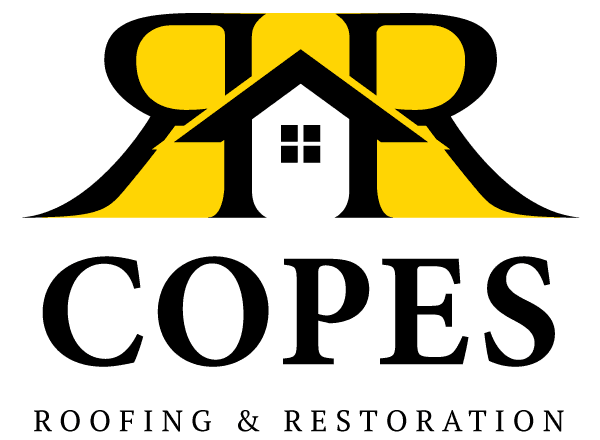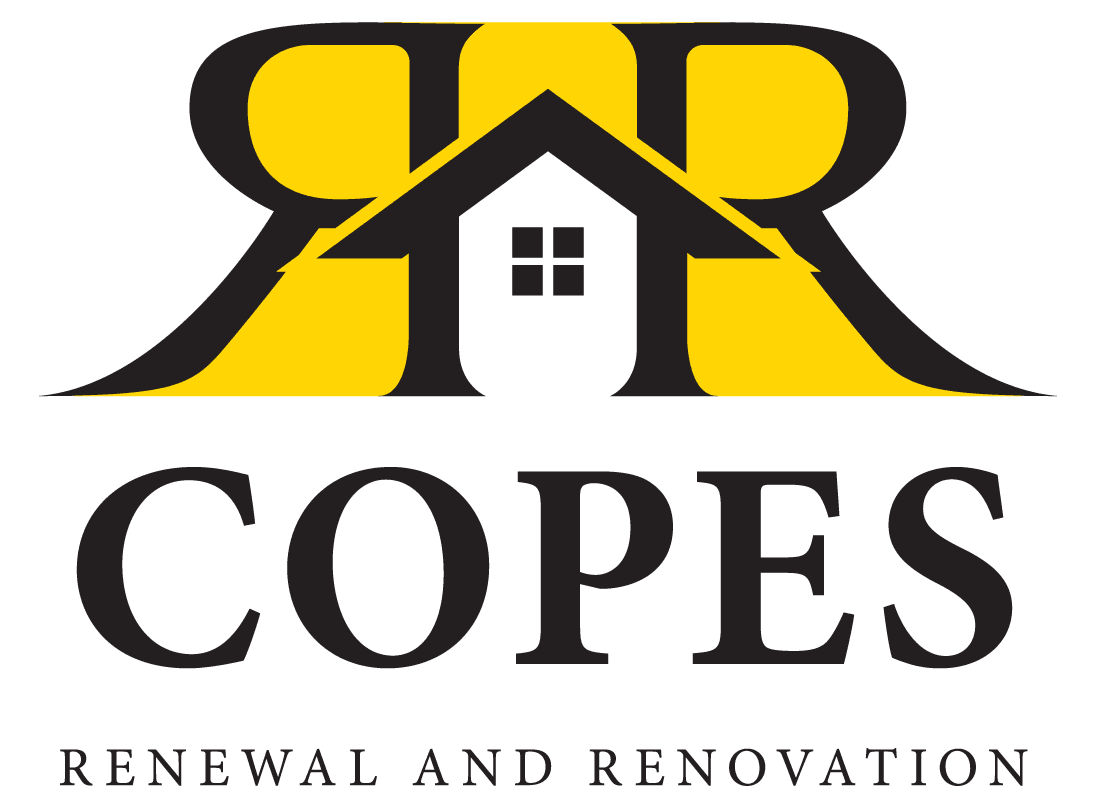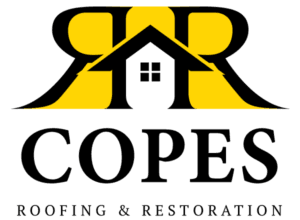Moss creeping across your shingles isn’t just an eyesore. It’s silently destroying your home’s first line of defense. Left unchecked, this green invader traps moisture against your house’s materials, accelerating decay and potentially costing thousands in premature replacement.
Before moss damage becomes irreversible, take action today. If you’ve already noticed lifting shingles or water intrusions, don’t wait. Contact Copes R&R Construction for expert roof repair services that protect your investment.
3 Major Risks of Moss Growth on Your Roof
Accelerated Shingle Deterioration
Moss acts like a sponge, holding moisture directly against your shingles 24/7. This constant wetness breaks down the protective granules on asphalt shingles faster than normal weathering would. Your roof’s lifespan could shrink by 10 years or more. The damage often starts invisibly beneath the moss layer. By the time you notice curling edges, the deterioration has already begun.
Structural Water Damage
When moss growth becomes thick, it creates dams that redirect water flow on your roof. This infiltration can rot wooden decking and rafters underneath. Repair costs skyrocket when structural components need replacement. Prevention through regular cleaning saves thousands compared to fixing water-damaged framing.
Ice Dam Formation
Winter brings unique dangers to moss-covered houses. The uneven surface traps snow and creates perfect conditions for ice dams. These frozen barriers force melting water backward under shingles. Interior leaks often appear first in attics and upper walls. Ceiling stains and peeling paint signal that moss has already contributed to serious winter damage.
How often should you clean your roof?
Most professionals recommend cleaning every 2-3 years to prevent moss buildup. However, homes in shaded areas or regions with high humidity may need annual cleaning. Watch for early warning signs rather than following a rigid schedule. Regular inspections help you catch moss growth before it causes expensive damage to your materials.
8 Signs You Need to Clean Your Roof
- Green or dark patches appearing on north-facing slopes
- Shingles looking darker or discolored compared to their original shade
- Visible moss growths, especially along edges where roof sections meet
- Granules from shingles collecting in gutters more than usual
- Neighbors mentioning your roof looks “fuzzy” or has a green tint
- Water stains appearing on interior ceilings after rain
- Gutter systems overflowing despite being clear of leaves
- Lifting or curling shingle edges where moss has taken hold
3 Benefits of Regularly Cleaning Your Roof
Improved Home Value
Clean roofs make powerful first impressions on potential buyers. Real estate agents confirm that visible moss spores raise red flags about overall maintenance. Your property’s curb appeal improves dramatically with a moss-free system. Home inspectors also take note of the condition prominently in their reports. Regular cleaning demonstrates responsible ownership and protects your investment’s resale value.
Lower Maintenance Costs
Catching moss early prevents cascading damage throughout your system. Small moss patches removed quickly don’t compromise shingle integrity. Gutters stay clear when moss isn’t constantly washing into them. You’ll avoid emergency repairs from water damage or ice dams. Preventive cleaning costs far less than fixing problems moss creates. Smart homeowners know that regular maintenance beats reactive repairs every time.
Better Energy Efficiency
A clean roof performs its reflective and insulating functions properly. Your cooling bills drop when moss isn’t absorbing extra heat in summer. Winter heating costs decrease as proper ventilation returns to normal. The temperature in your attic stabilizes, reducing strain on HVAC equipment. Many homeowners see utility savings that offset professional cleaning costs. Energy efficiency improvements alone justify keeping your house moss-free.
What is the fastest way to remove moss from a roof?
The fastest safe method combines moss-killing chemicals with gentle removal techniques. Apply a specialized roof cleaning solution on a cloudy day, let it work for 15-20 minutes, then rinse with low-pressure water. Most chemical moss-killer solutions work within hours, though complete removal may take several days as dead moss naturally loosens.
A Step-by-Step Guide to Removing Moss
- Check the weather forecast – Pick an overcast day with no rain expected for 24 hours. Direct sunlight makes chemicals evaporate too quickly.
- Protect your landscaping – Cover plants and grass with plastic sheeting. Even eco-friendly cleaners can stress sensitive vegetation.
- Mix your cleaning solution – Combine moss killer with water according to package directions. A pressure sprayer works best for even application.
- Start from the top – Apply solution at the peak, working downward. This prevents streaking and ensures complete coverage.
- Let chemistry do the work – Wait 15-20 minutes for the solution to penetrate moss roots. Patience here prevents damage.
- Rinse gently – Use a garden hose with moderate pressure, spraying downward. Let water flow naturally carry away dead moss.
- Remove stubborn patches – Gently brush persistent moss with a soft-bristled broom. Work from top to bottom, following shingle lines.
- Clear your gutter guards – Dead moss will wash into gutters over the coming weeks. Check and clean them regularly to prevent clogs.
- Apply preventive treatment – Once clean, consider installing zinc strips or applying preventive solutions to slow future growth.
6 Mistakes You Should Avoid
Using High-Pressure Washing on Roofing Materials
A pressure washer might seem like the quickest solution, but it’s actually one of the worst choices. The intense water force strips away protective granules from asphalt shingles, leaving them vulnerable to UV damage and weather. What starts as moss removal becomes premature aging of your entire roof surface. Professional roof cleaning uses controlled, low-pressure techniques that remove moss without damaging the underlying materials.
Applying Bleach or Harsh Chemical Solutions
Straight bleach kills moss but also kills everything else it touches. Your landscaping suffers when bleach runoff reaches flower beds and lawns. Galvanized flashing and gutters corrode faster when exposed to liquid chlorine bleach repeatedly. The harsh fumes pose health risks while you’re working on the roof. Specialized moss removal products clean effectively without the collateral damage that bleach causes to your property.
Walking on a Wet Roof
Wet roofing materials become incredibly slippery, especially when covered with dying moss. One wrong step sends you sliding toward the edge with no way to stop. Hospital bills from fall injuries far exceed any savings from DIY cleaning. Beyond safety concerns, walking on wet shingles can crack or dislodge them. Wait for dry conditions or hire professionals with proper safety equipment and experience navigating tricky roof surfaces.
Cleaning During Extreme Weather
Summer heat makes cleaning chemicals evaporate before they work properly. Winter freezing can turn your roof into an ice rink after rinsing. Strong winds blow chemicals where they shouldn’t go, damaging siding or windows. Ideal cleaning happens on mild, overcast days with no rain forecast. Patience in waiting for proper weather conditions ensures both safety and effectiveness in moss removal.
Ignoring Safety Equipment
Your roof sits 15-30 feet above ground; that’s a dangerous fall without protection. Proper safety gear includes non-slip shoes, safety harnesses, safety ropes, and stable ladders. Many homeowners underestimate how disorienting the work can become when they’re focused on cleaning. Professional roofers use OSHA-approved safety systems for good reason. Don’t let moss removal become a medical emergency because you skipped basic safety precautions.
Scraping or Scrubbing Too Aggressively
Aggressive scrubbing tears away more than just moss. Those granules protecting shingles from sun damage come loose with heavy brushing. Wire brushes or metal scrapers create grooves where water collects and accelerates deterioration. Gentle chemical treatment followed by soft rinsing removes moss without mechanical damage. Let time and proper products do the hard work instead of muscling through the cleaning process.
Conclusion
Don’t let moss turn your roof into an expensive headache. The damage happening right now only worsens with each passing season, but you can stop it today.
Take action before small patches become costly repairs. Schedule your professional roof inspection with Copes R&R Construction and discover how we restore damaged roofing materials to peak performance. Follow us on Facebook for more homeowner tips and exclusive seasonal maintenance reminders that protect your biggest investment.


